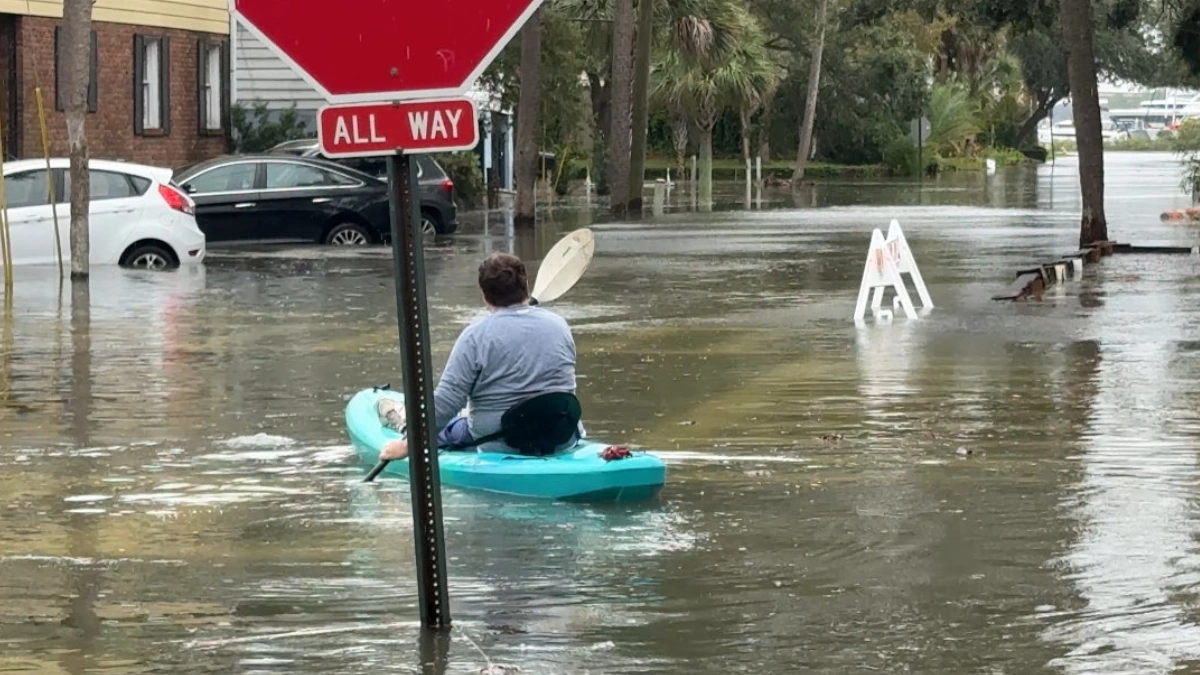A State of Emergency was declared for New York City as a powerful nor’easter moved up the East Coast of the United States.
The system is tracking from the mid-Atlantic to the Northeast, threatening tens of millions with flash floods and heavy rainfall this week.
New York Governor Kathy Hochul also declared a state of emergency for New York City, Long Island, and Westchester. “We’re ready to assist local partners as damaging winds and heavy rain move in, with the potential for flooding and power outages,” Hochul said.
High tide at East Ocean View, Norfolk, Virginia due to the 10-12-25 Nor-Easter
For more information, please visit: https://t.co/kIvtpj7teg#VDEM #noreaster #weatherproofyourworld #flooding #WeatherReady #LocalAlerts pic.twitter.com/8VMJpZ4aAx
— Virginia Department of Emergency Management (@VDEM) October 12, 2025
Because of the severe weather and the emergency declaration, New York City’s Columbus Day Parade was canceled.
“Due to the Governor’s declaration of a State of Emergency on the evening of October 12 in response to the dangerous weather conditions brought on by the nor’easter, including high winds, heavy rain, and flooding in surrounding areas, we must cancel the 81st Annual Columbus Day Parade for the safety of all participants and viewers,” officials said in a statement.
Officials added that the parade cannot be rescheduled and will next be held in 2026.
A significant tidal flooding event is in the forecast tomorrow beginning with the late morning high tide an the most impactful high tide cycle being in the afternoon all along our coastal Virginia communities. pic.twitter.com/ePZuhciiKq
— Virginia Department of Emergency Management (@VDEM) October 11, 2025
Earlier, the storm brought heavy rainfall across the Southeast and the Carolinas on October 11, producing tropical-storm-force winds from North Carolina to the New Jersey shore. Wind gusts of up to 97 km/h (60 mph) were recorded along the East Coast.
The persistent system continues to produce heavy surf, triggering 60–120 cm (2–4 feet) of coastal flooding in areas along the Outer Banks, which have been affected by multiple high-surf events in recent weeks. Several homes have collapsed as a result.
North Carolina’s Highway 12 was closed early on October 12 as the Outer Banks continued to be battered by storms. Footage from the North Carolina Department of Transportation (NCDOT) cameras showed ocean water washing over the roadway and a truck stuck in the surf. Officials urged residents not to travel in the area.
Motorists were trapped by widespread flooding across Georgetown County, South Carolina, on October 12, prompting multiple rescues. Emergency Services Director Brandon Ellis said parts of the county received more than 180 mm (7 inches) of rainfall through the weekend.
Extremely high tides flooded Charleston, South Carolina, on October 11, forcing the closure of many streets in the downtown area.
Coastal flooding right now in Garden City. Flooding was not as bad as yesterday and now that we’re past high tide, the water is receding. Thanks Kathy Dee. pic.twitter.com/H09iOpMddn
— Ed Piotrowski (@EdPiotrowski) October 11, 2025
Acting New Jersey Governor Tahesha Way declared a state of emergency on October 10, authorizing state and local agencies to activate their emergency operation plans.
In Virginia, the city of Norfolk sealed its 14 km (9 miles) floodwall ahead of coastal inundation. By October 12, gusting winds had pushed high tides into Norfolk’s East Ocean View neighborhood. Emergency officials urged residents to stay indoors and off roads.
The National Weather Service (NWS) placed New York City, Long Island, and southern Westchester County under a coastal flood warning and wind advisory through the afternoon of October 13.
Coastal areas of Long Island could experience flooding, with up to 8 cm (3 inches) of rain and strong winds expected, the NWS said.

